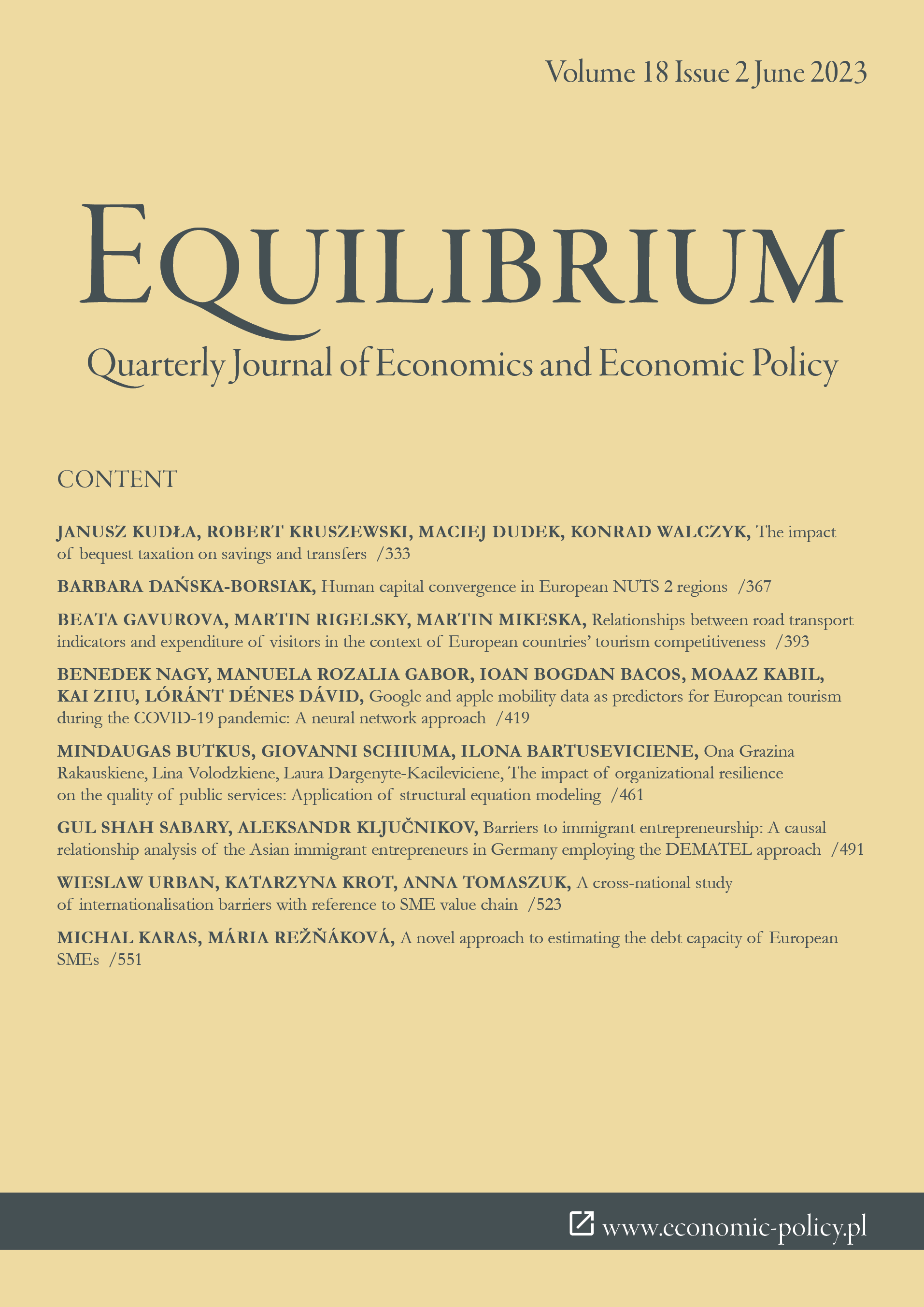Google and Apple mobility data as predictors for European tourism during the COVID-19 pandemic: A neural network approach
Google and Apple mobility data as predictors for European tourism during the COVID-19 pandemic: A neural network approach
Author(s): Benedek Nagy, Manuela Rozalia Gabor, Ioan-Bogdan Bacoș, Moaaz Kabil, Kai Zhu, Lóránt Dénes DávidSubject(s): Health and medicine and law, Tourism, ICT Information and Communications Technologies, Transport / Logistics
Published by: Instytut Badań Gospodarczych
Keywords: mobility; tourism; Google mobility data; Apple mobility data; Europe; COVID-19 pandemic;
Summary/Abstract: Research background: The COVID-19 pandemic has caused unprecedented disruptions to the global tourism industry, resulting in significant impacts on both human and economic activities. Travel restrictions, border closures, and quarantine measures have led to a sharp decline in tourism demand, causing businesses to shut down, jobs to be lost, and economies to suffer.Purpose of the article: This study aims to examine the correlation and causal relationship between real-time mobility data and statistical data on tourism, specifically tourism overnights, across eleven European countries during the first 14 months of the pandemic. We analyzed the short longitudinal connections between two dimensions of tourism and related activities.Methods: Our method is to use Google and Apple's observational data to link with tourism statistical data, enabling the development of early predictive models and econometric models for tourism overnights (or other tourism indices). This approach leverages the more timely and more reliable mobility data from Google and Apple, which is published with less delay than tourism statistical data.Findings & value added: Our findings indicate statistically significant correlations between specific mobility dimensions, such as recreation and retail, parks, and tourism statistical data, but poor or insignificant relations with workplace and transit dimensions. We have identified that leisure and recreation have a much stronger influence on tourism than the domestic and routine-named dimensions. Additionally, our neural network analysis revealed that Google Mobility Parks and Google Mobility Retail & Recreation are the best predictors for tourism, while Apple Driving and Apple Walking also show significant correlations with tourism data. The main added value of our research is that it combines observational data with statistical data, demonstrates that Google and Apple location data can be used to model tourism phenomena, and identifies specific methods to determine the extent, direction, and intensity of the relationship between mobility and tourism flows.
Journal: Equilibrium. Quarterly Journal of Economics and Economic Policy
- Issue Year: 18/2023
- Issue No: 2
- Page Range: 419-459
- Page Count: 41
- Language: English

